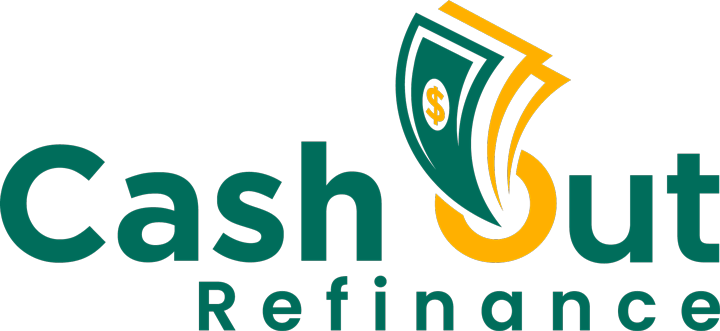Refinancing your home with an FHA cash-out refinance can be an excellent way to access the equity you’ve built in your property, especially if you’re looking to consolidate debt, pay for home improvements, or cover other major expenses. However, one key aspect of the FHA cash-out refinance that borrowers need to understand is mortgage insurance.
With an FHA loan, borrowers are required to pay Mortgage Insurance Premiums (MIP), both upfront and annually. These premiums serve to protect lenders by insuring the loan in case the borrower defaults. While mortgage insurance makes FHA loans more accessible, it also adds to the overall cost of the loan. In this comprehensive guide, we’ll explore how FHA mortgage insurance works, the costs involved, and how you can reduce or eliminate MIP over time.

What is Mortgage Insurance and Why Is It Required for FHA Loans?
Mortgage insurance is a type of insurance that protects the lender if a borrower defaults on their mortgage. In the case of an FHA loan, this insurance is required because FHA loans are designed for borrowers who may not meet the stricter requirements of conventional loans, such as having a high credit score or substantial down payment.
The Federal Housing Administration (FHA) insures these loans to mitigate the risk to lenders, allowing them to offer loans to borrowers who might otherwise not qualify. However, the borrower must pay for this insurance in the form of Mortgage Insurance Premiums (MIP).
MIP is mandatory for all FHA loans, including FHA cash-out refinances, and it consists of two main components: the Upfront Mortgage Insurance Premium (UFMIP) and the Annual Mortgage Insurance Premium (MIP).
Understanding the FHA Upfront Mortgage Insurance Premium (UFMIP)
The Upfront Mortgage Insurance Premium (UFMIP) is a one-time fee that borrowers must pay when taking out an FHA cash-out refinance. This fee is calculated as a percentage of the loan amount and is typically added to the loan balance rather than being paid out of pocket at closing.
How Much is the Upfront MIP?
As of 2024, the Upfront MIP for FHA loans is set at 1.75% of the loan amount. This means that if you take out a $200,000 FHA cash-out refinance, your upfront MIP would be $3,500. Most borrowers choose to roll this cost into their loan, which increases the loan balance but reduces the need for immediate cash at closing.
For example, if your FHA cash-out refinance loan is $200,000, you would add the $3,500 MIP to your loan amount, bringing your total loan balance to $203,500. This means you would borrow slightly more than the value of your original loan to cover the cost of the upfront MIP.
Can You Pay the UFMIP in Cash?
While most borrowers choose to roll the Upfront MIP into their loan, it is possible to pay this fee in cash at closing if you prefer. This would reduce the total loan balance, potentially lowering your monthly mortgage payment slightly. However, paying the Upfront MIP in cash is optional, and for many borrowers, rolling it into the loan is the most practical option.
KNOW: “FHA cash-out refinance mortgage insurance”
Understanding the FHA Annual Mortgage Insurance Premium (MIP)
In addition to the Upfront MIP, borrowers must also pay the Annual Mortgage Insurance Premium (MIP), which is calculated based on the loan-to-value ratio (LTV) and the length of the loan term. Unlike the Upfront MIP, which is a one-time payment, the Annual MIP is paid each year for the life of the loan or until specific conditions allow for its removal.
How Much is the Annual MIP?
The Annual MIP for an FHA cash-out refinance typically ranges from 0.45% to 1.05% of the loan amount, depending on the loan-to-value ratio and the length of the loan term. Most borrowers will fall into the 0.80% to 0.85% range for a 30-year loan with an LTV greater than 90%.
For example, if you borrow $200,000 through an FHA cash-out refinance and your Annual MIP is 0.85%, you would pay $1,700 annually, or approximately $142 per month, in addition to your regular mortgage payment.
How is the Annual MIP Calculated?
The Annual MIP is calculated based on the loan’s initial balance, not the remaining balance over time. This means that even as you pay down the loan, the MIP is calculated based on the original loan amount rather than the reduced balance.
For example, if your original loan amount was $200,000 and you’ve paid it down to $180,000, your MIP will still be calculated based on the $200,000 balance.
How Long Do You Have to Pay MIP on an FHA Cash-Out Refinance?
One important factor to consider when refinancing with an FHA cash-out loan is how long you’ll be required to pay MIP.
- For loans with an LTV greater than 90%, borrowers must pay Annual MIP for the entire life of the loan. This means if you take out a 30-year FHA cash-out refinance with an LTV above 90%, you’ll pay MIP for all 30 years unless you refinance into a different type of loan.
- For loans with an LTV of 90% or less, borrowers are required to pay MIP for the first 11 years of the loan. After 11 years, the mortgage insurance will be automatically canceled, and you’ll no longer be required to make those payments.
Understanding how long you’ll need to pay MIP is essential for planning your long-term financial strategy. If your LTV is above 90%, you’ll need to consider the cost of MIP over the full loan term when calculating the total cost of your mortgage.
Know: “How does mortgage insurance work with FHA refinance?”
How to Reduce or Eliminate FHA Mortgage Insurance Premiums
While MIP is a mandatory part of FHA loans, there are ways to reduce or eliminate it over time. If you’re planning to use an FHA cash-out refinance, consider these strategies to lower the overall cost of mortgage insurance.
1. Build More Equity in Your Home
One of the best ways to reduce your MIP burden is by building more equity in your home. If your loan-to-value ratio (LTV) is below 90%, you can significantly reduce the length of time you’ll be required to pay MIP.
By paying down your mortgage principal or making home improvements that increase the value of your property, you can lower your LTV ratio and potentially shorten the amount of time you’re required to pay MIP. This is especially helpful if you’re close to the 90% LTV threshold, as lowering your LTV below 90% will limit MIP payments to just 11 years.
2. Refinance Into a Conventional Loan
Another way to eliminate FHA mortgage insurance is to refinance into a conventional loan once you have enough equity in your home. Conventional loans typically don’t require private mortgage insurance (PMI) if your LTV is 80% or lower, meaning you won’t have to pay ongoing mortgage insurance premiums.
If you’ve built up 20% equity in your home since taking out the FHA cash-out refinance, you can refinance into a conventional loan to eliminate MIP altogether. This strategy can result in significant savings, especially if you plan to stay in the home for an extended period.
3. Pay Off the Loan Faster
Paying off your mortgage faster can also reduce the overall cost of MIP. While you’ll still be required to pay MIP for the first 11 years or for the life of the loan (depending on your LTV ratio), paying off the loan faster can help you minimize the total amount you’ll pay in MIP over time.
For example, if you make extra payments toward your mortgage principal or shorten the term of your loan through refinancing, you’ll pay off the loan more quickly, reducing the number of years you’ll have to pay MIP.
4. Consider a Higher Down Payment
When applying for an FHA cash-out refinance, you’re not required to make a new down payment. However, if you have the funds available, making a higher down payment can lower your LTV ratio, which in turn can shorten the length of time you’re required to pay MIP.
A larger down payment not only reduces the amount of your mortgage but also helps you reach the 90% LTV threshold, limiting MIP to just 11 years instead of the life of the loan. This can result in significant savings, especially on a 30-year mortgage.
Final Thoughts
Understanding how mortgage insurance works with an FHA cash-out refinance is crucial for homeowners who want to access their home’s equity without facing unexpected costs. The Upfront MIP and Annual MIP are mandatory components of FHA loans, but with careful planning, you can minimize their impact on your financial goals.
By building equity, refinancing into a conventional loan, or paying off your mortgage faster, you can reduce or eliminate your mortgage insurance premiums over time, making your FHA cash-out refinance a more affordable and effective financial tool.
If you’re considering an FHA cash-out refinance, consult with a mortgage professional to determine how MIP will impact your loan and explore strategies to minimize these costs.

